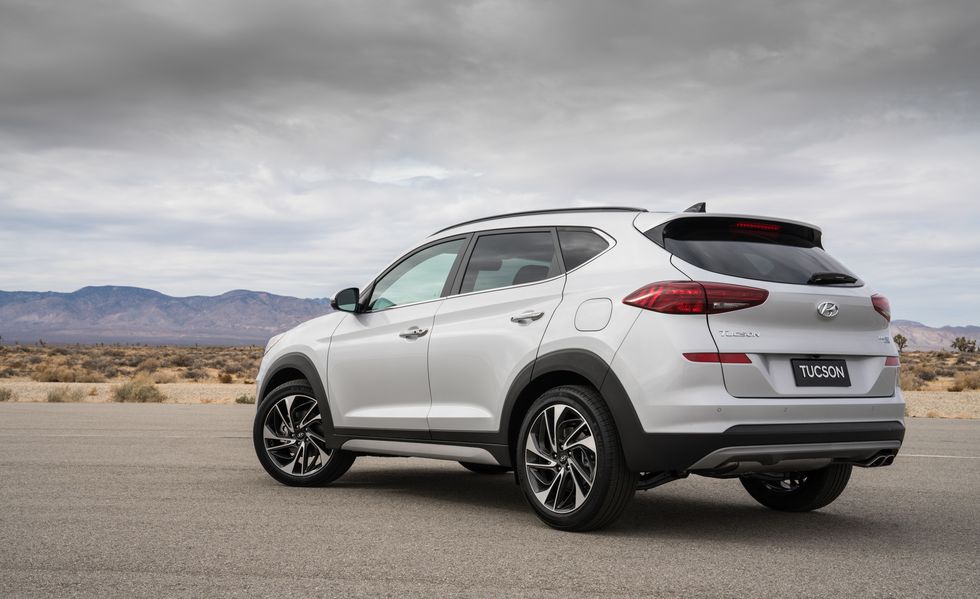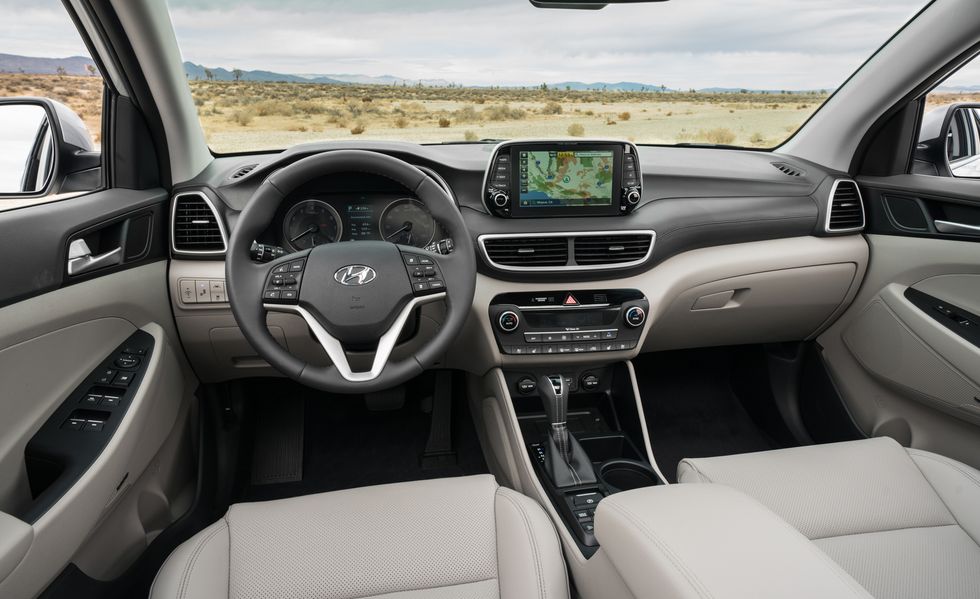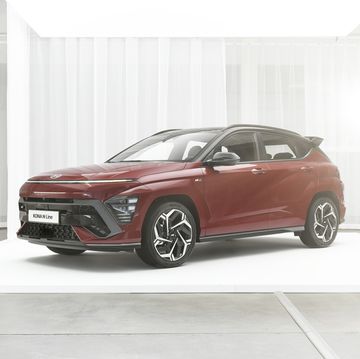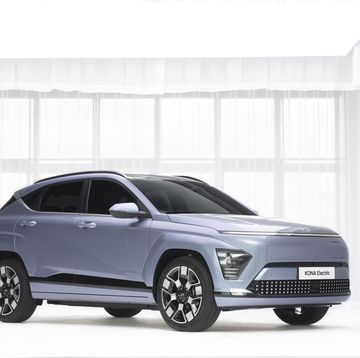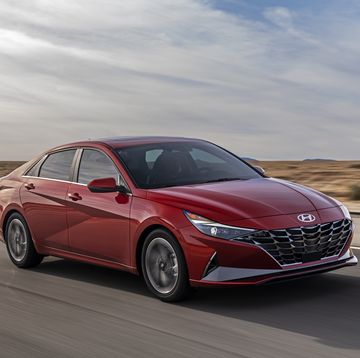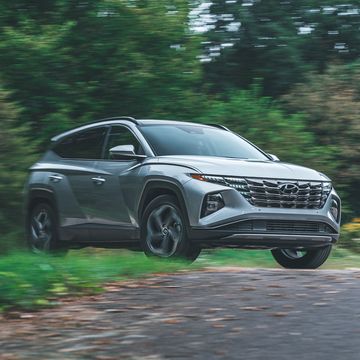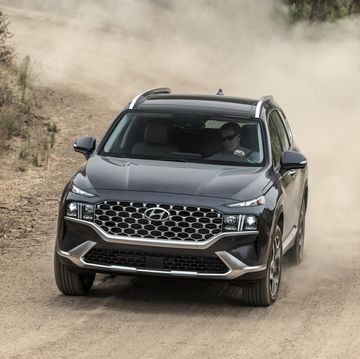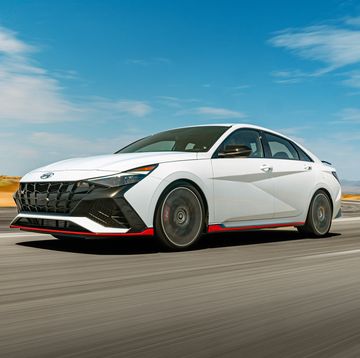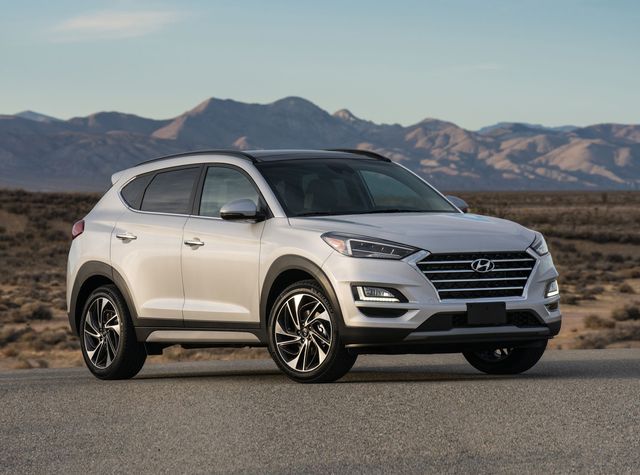
Select a year
- Highs Handsome exterior, straightforward dashboard design, agreeable driving demeanor.
- Lows Less cargo space than key rivals, mediocre fuel economy, powertrain warranty doesn't transfer to second owner.
- Verdict The Tucson is proof that Hyundai knows exactly what small SUV buyers want.
Overview
Hyundai has evolved from making low-priced econoboxes to producing stylish, feature-rich cars and SUVs; the 2020 Tucson is just one of the brand's latest examples. The Tucson sits near the smaller end of the brand's lineup—slightly larger than the Kona and a bit trimmer than the Santa Fe. As with both of these other crossovers, the 2020 Tucson boasts a handsome exterior design, a well-equipped cabin, and a choice of two different four-cylinder engines with either front- or all-wheel drive. Base models offer a lot to love, including touchscreen infotainment with Apple CarPlay and Android Auto capability, automated emergency braking, and lane-keeping assist technology. Spend more for a Limited or Ultimate model and the Tucson offers near-luxury appointments at bargain prices.
What's New for 2020?
The 2019 received a wide range of updates, so the 2020 Tucson's changes are modest. Hyundai revamped the available colors for the exterior; a leather-wrapped steering wheel and shift knob are standard on Sport trim levels and above.
Pricing and Which One to Buy
We'd stick with the mid-range SEL, which was our pick for 2019. The SEL offers most of the niceties that modern SUV shoppers want, including dual-zone automatic-climate controls, a rear-seat USB port, heated front seats, and SiriusXM satellite radio. Choosing the SEL also adds 18-inch wheels and silver-painted exterior accents that give the Tucson a classier appearance.
Engine, Transmission, and Performance
Two different four-cylinder engines are on tap to power the Tucson—a 164-hp 2.0-liter or a 181-hp 2.4-liter; both team with a six-speed automatic. In our testing, the base 2.0-liter delivered lethargic performance in all of our metrics. Unfortunately, we haven't sampled the upgraded 2.4-liter engine, but expect it to deliver slightly better acceleration times. Handling isn't all that noteworthy in the Tucson; it's competent but not sporty. Body roll is well controlled, the steering is well weighted, and overall the Tucson changes direction with confidence. It also offers a very smooth and refined ride, and the suspension soaks up all but the harshest bumps nicely. This lack of bias to either the sporty or floaty ends of the handling spectrum strikes us as the kind of balanced nature that crossover shoppers will find appealing.
Fuel Economy and Real-World MPG
The Tucson's two four-cylinder engines earn EPA ratings that are merely average for this segment. Our all-wheel-drive test vehicle was powered by the larger 2.4-liter four-cylinder which delivered 26 mpg, matching its rating from the EPA.
Interior, Comfort, and Cargo
Inside the Tucson's dapper cabin, occupants are treated to well-built surroundings with user-friendly controls and a European-style design. It's a bit on the monochromatic side with the all-black color scheme but opting for the beige upholstery adds some contrast. Cloth seating is standard, provided by YES Essentials; Hyundai claims the fabric resists staining, repels odors, and reduces static. For those who prefer leather, the Limited and Ultimate models offer it as standard equipment. Fold the Tucson's rear seats flat and there is room for 22 carry-on suitcases; with the seats up, it held seven.
Infotainment and Connectivity
A full-fledged infotainment system with a 7.0-inch touchscreen, Apple CarPlay, and Android Auto capability is standard. Both the Limited and Ultimate trim levels feature an 8.0-inch touchscreen plus in-dash navigation.
Safety and Driver-Assistance Features
Overall Safety Rating (NHTSA)
Hyundai's compact crossover earns accolades from both the National Highway Traffic Safety Administration and the Insurance Institute for Highway Safety for its strong showing in crash tests; newly standard driver-assistance features such as automated emergency braking and lane-keeping assist add an extra layer of protection. Additional features are optional. Key safety features include:
- Standard automated emergency braking
- Standard lane-keeping assist
- Available adaptive cruise control
Warranty and Maintenance Coverage
Hyundai and its sister company Kia offer the most competitive warranty coverages in autodom, including the longest powertrain coverage. The company also now offers complimentary scheduled maintenance that bests mainstream rivals such as Toyota.
- Limited warranty covers 5 years or 60,000 miles
- Powertrain warranty covers 10 years or 100,000 miles
- Complimentary maintenance covers 3 years or 36,000 miles
